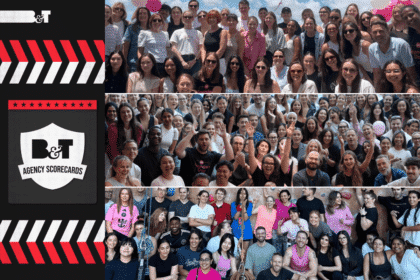In this guest post, Matt Soulsby, Senior Social Media Manager at Columbus, delves into how brands can minimise wasted advertising to make a lasting impression.
As marketers we are consistently reminded that the majority of brand communications are being ignored by the intended audience.
In the modern media landscape, we find ourselves inundated with distribution opportunities across ever-evolving media platforms. Reach, as a statistic, has become superseded, as brands are now seeking the attention of prospective consumers.
It is no longer enough to serve impressions by the millions. We need to master the art of serving lasting impressions and remaining top of mind to deliver positive outcomes for brands.
The rise of social media in the past decade has radically shaped how we, as users, interact with brands. We now have the power to reshape the platform itself. People have come to expect a certain level of control over what they watch and when they watch it.
The ‘audience mindset’ needs to become a key consideration for any brand attempting to maximise the value of an impression over time.
The way an audience perceives a brand’s message is considerably influenced by their mindset. Through video, we commonly see audience mindset classified as either ‘Disruption’ or ‘Discovery’.
The Discovery Mindset
Discovery is regularly linked to content that is shown within a social feed. Hotels.com is a brand who consistently produces high quality content in this space. Their Silent Piano ad is evidence of exactly how brands can cleverly leverage video auto playing without sound, as they turn this into an opportunity, not a hindrance.
In this social environment we see users discovering content based on their interests, emotions and lifestyle connections. Failure to meet these filters of content relevancy often results in creative flying under the radar and losing its ability to have an impact.
The Disruption Mindset
A mindset of disruption is most commonly evident with digital pre-rolls and television commercials, where video occurs as a disturbance to a viewing experience. In the moment that content is being delivered, it is rare for an audience to maintain an appetite for long form video. The audience are enduring a forced interruption and are being asked to watch uninvited content.
Reed.co is a great example of a brand overcoming that barrier. Their 2013 procrastination campaign demonstrates the importance of creating instant excitement with your content. Message recall and a positive brand association are both extremely dependent on whether disruptive content is being viewed as entertaining or invasive.
Understanding the user mindset and serving content accordingly can allow brands to overcome content irrelevancy and gain the attention of an audience. The impact of mindset planning can not only drive cost efficient media buying, but also contribute to a brand’s ability to seamlessly integrate into new media environments.
The Directive
As our industry continues to reinvent itself, only the brands and marketers who test the limits of content are able to adapt quickly and thrive long term.
With targeting algorithms continuing to develop and data becoming increasingly accessible, there has never been a better time to realise the potential of each and every impression served. Focus on serving a lasting impression – not buying a cheap one.








